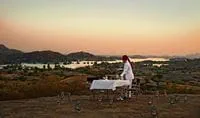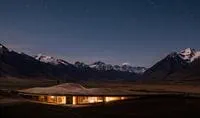Our guide to Japan
Japan is like no country on earth with a truly unique culture, which many perceive as the exotic unknown. Even though Japan does have a unique code of social etiquette its people are generous, welcoming, charming and warm, making any trip here something to be remembered.

Stereotypes are not always to be trusted, Japan is not a difficult country to navigate. Even though at times there can be a communication barrier with Japanese the only language spoken in areas this does not impede the trip but simply makes it more enjoyable as you discover this magnificent country.
When is the best time to visit Japan?
The shoulder seasons from late September to the start of December and early March until the start of May are beautiful. Japan is known for its change of seasons and takes any opportunity available to celebrate these beautiful periods especially with the cherry blossom in the Spring and the golden leaves of Fall. During these times, the weather is mild and perfect for sightseeing. Winter in Japan on the island of Honshu and further south is relatively mild with snowfall expected especially in January and early February. Areas in the mountains such as Nagano, the Japanese Alps and Hakone will have lower temperature and higher snowfall during the winter with some roads closing at this time of year with the level of snow. Late June and early July can be very wet and from July into August it will be very humid. Read more about the best time to visit.
How to get to Japan
There are daily flights into Tokyo (both Tokyo Narita Airpport and Tokyo Haneda Airport) in the north of the island of Honshu and flights into Osaka Kansai Airport in south of Honshu about an hour and 30 minutes drive from Kyoto. If you are flying into Tokyo, Tokyo Narita Airport is about an hour and a half outside the city center while Tokyo Haneda is only 40 minutes.
How to get around Japan
Japan operates a hugely efficient, clean and user friendly train system making it incredibly easy to use and get around the country. We would always suggest that when traveling in peak times instead of using a Japan Rail Pass that we book individual bullet trains for you as you are able to book these 30 days in advance of travel and ensure the train that you need each day as the Japan Rail Pass does not allow seats to be pre-booked.
What luggage can I take on the train?
The bullet trains have very limited space for luggage with only small overhead racks and a very small space in each compartment. As such, when using the bullet train we suggest that you take advantage of the luggage courier service to send your luggage from hotel to hotel - this can be arranged with the concierge. The service takes 24 hours so we suggest that you send your bigger bags ahead and then take small overnight bags on the train to make the traveling process that little bit easier.
What are the main highlights of Japan?
The main cultural highlights of Japan are located on the main island of Honshu. For any first time visit to Japan, consider including Tokyo, Kyoto, Miyajima, Hiroshima, Hakone and Kyoto in your itinerary. Any of these destinations can be easily combined together to limit the time you are traveling - working the trip into a loop works best if you want to combine all the highlights. You will normally need to fly in and out of Tokyo making the route from Tokyo, Hakone, Kyoto, Hiroshima, Miyajima, Kanazawa and back to Tokyo works well. On top of exploring the areas themselves we would suggest that you include some unique hands on experiences in your trip such as tea ceremony, dinner with Geisha, a sushi lesson in the Tsukiji Fish Market, a Taiko Drumming lesson and a calligraphy lesson to name a few.
Do I need to worry about cultural differences and etiquette?
Japan does have a strict code of cultural etiquette and correct manners are very important to the Japanese. As a tourist you will not be expected to know or follow these guidelines. However when visiting Japan who should always be polite and courteous to those around you and it is a good idea to be familiar with at least the basics. It is considered impolite to blow your nose in public especially on a public bus or train; pointing your forefinger at someone you are talking to may make others uncomfortable; do not pour your own alcoholic drinks but let others do this for you and vice versa; if toilet slippers are provided in the bathroom of an establishment where you have been asked to remove your shoes make sure that these are not worn outside of the bathroom; in a public bath you must wash before you enter to soak; do not pass food between two people using chopsticks - if you would like to share food it should be passed from plate to plate; do not stick your chopsticks up in a bowl of rice as this is connected with funeral ceremonies; when entering temples or ryokans shoes should be removed; it is not customary for Japanese to shake hands when meeting and tipping is not part of the Japanese culture and it can be seen as an insult in some establishments. The Japanese are lovely and welcoming people so don’t worry be too worried about following the rules as you will be forgiven!
Luxury hotels and traditional Ryokans
Japan has some of the best five star hotels in the world with an incredible level of service. Pride in doing your job well is taken seriously in Japan which is why the standards and levels of service are so high. The highest level of service is given at Ryokans.
What is a Ryokan?
A Ryokan is a traditional Japanese Inn where you will sleep on futons on the floor and are served breakfast and dinner in your room by your room attendant who will be on hand throughout your stay to make sure your experience is as enjoyable as possible. Onsens or baths using naturally warm spring water are also a large part of the experience. Most Japanese during their stay at a Ryokan will enjoy the onsen on the afternoon that they arrive before dinner, again after dinner and then before or after breakfast on the morning that they depart. There are very strict rules with the public onsens in the hotels that must to adhered to. Clothes are not allowed in the public onsen so if you are not comfortable using the public onsen we would suggest taking a room that has its own private open air bath so that you can enjoy the onsen in privacy.
Your futon beds are placed directly on the floor. You will either have one room that acts as your dining room and living room in the day and then is converted into a bedroom by your room attendant at night, or in larger rooms you will have two rooms separated by sliding doors with a separate living/dining room and bedroom.
Dinner is always a traditional Kaiseki Dinner which is a nine course menu designed to highlight the different cooking styles and produce that each individual area is known for, however they normally follow the same pattern of types of dishes. The courses are an appetizer or amuse-bouche, sushi, a simmered dish, a soup dish, a grilled dish, a vegetable dish, a hot pot dish, boiled rice, miso soup and pickled vegetables and finally to finish a small dessert.
Each dish is beautifully presented and will be individually brought to your room by your room attendant which makes dinner last around 3.5 hours. Breakfast is also extensive and you can chose to have either a western menu or a traditional Japanese breakfast which you must try at least once!
During your time at the ryokan you will be invited to wear a Yukata (an informal Kimono) around the hotel so that you feel completely relaxed.
Classic itineraries
We always 100% tailor our itineraries making each trip slightly different depending on guests individual preferences. We have created a number of itineraries as a starting point for inspiration and to give you a better idea of what sort of trips we can arrange for you - but all of these can be adapted when you speak to us.
If you are short on time but still want to pack in the top highlights, take a look at Japan by Bullet Train which includes Tokyo, Kyoto and Hakone. If you are looking to include stops further south, Cherry Blossom in Japan allows you to visit Hiroshima and Miyajima Island. If you want to get off the beaten track and the chance to explore the Japanese Alps on foot, then go for Wild Japan which will allow you to explore the Nakasendo Walking Trail staying in unique but very simple Japanese Inns.
Is Japan a good destination for children and families?
Japan is an incredibly safe and efficient country making it a brilliant destination to explore as a family. As days can be quite long and jam packed with sightseeing, we would suggest traveling with children over 10 years old to get the most enjoyment out of your trip. Apart from visiting temples and shrines, there are plenty of fun and exciting areas to visit for children such as Disney world in Tokyo, the Studio Park in Kyoto, the interactive open air museum in Hakone and a special pirate ship cruise on Lake Ashi.
Unique experiences
Alongside all the amazing places and sites that you will see during your trip in Japan we can arrange some incredible and hands on experiences to show off the county in a unique and interesting way. Learn how to make sushi like a local in one of the largest fish markets in the world, take a helicopter tour over Tokyo taking in the incredible skyline, take a calligraphy lesson or Taiko drumming lesson. Visit the Studio Park in Kyoto for a Samurai Sword Lesson or lean how to dress properly in Kimono and Samurai dress. We can also arrange for you to take part in traditional Japanese past times and entertainments such as a tea ceremony or dinner with Geisha.
Combinations with other countries
Japan is a brilliant country to visit on its own but as it's normally quite a busy itinerary based trip with 2 nights here and 3 nights there it is nice to have some relaxation beach time on the end. Even though there are beaches on the southern islands of Japan in the Okinawa Prefecture the properties that are here do not match the level of luxury that we normally provide for Scott Dunn guests. As such, a great beach pairing with Japan is the Philippines which can be reached by a direct flight from Tokyo to Manila or the central coast of Vietnam again which can be reached by a direct flight into Da Nang Airport. Both of these options offer beautiful white sand beaches and magnificent hotels with fantastic food and service providing the perfect place for you to simply sit back and relax.
Festivals and public vacations
Japan has a huge number of national festivals and public vacations throughout the year as well as countless local annual festivals. Domestic travel is popular in Japan which means that if possible, even though these festivals and vacations are very interesting, it is wise to avoid these periods. The busiest period is during Golden Week which falls each year in the last week of April and first week of May, and Obon Week in mid August.
Similar destinations that you might like too
If you like Japan and love culture, variation of scene and an itinerary based trip then you might also like to consider China, Vietnam, Sri Lanka, India. Scott Dunn operates in many destinations in the world.
Watch this space
Aman Tokyo has just opened in Tokyo and offers some of the largest hotel rooms in the city. With a beautiful combination of traditional Japanese hospitality fused with the slickness of Japan’s best city hotels this is definitely one to watch. Further offering a perfect combination with Philippines enjoy two brilliant properties - Aman Tokyo and Amanpulo in Philippines.
Call us on 212 372 7009 to start planning your vacation
Why Scott Dunn?
Unique to You

- We listen to your travel goals and craft unique trips that are personalized to you.
- We’re with you every step of your life’s travel journey, from honeymoons to family trips and beyond.
Seamless Service

- Global offices in the UK, US, and Singapore for 24/7 seamless service.
- We offer flexibility if your plans change so you can book with confidence and peace of mind.
Carefully Curated Collection

- We’ve curated an elevated collection of accommodation, experiences, and guides.
- Committed to fostering close global relationships to continue bringing you unique experiences.
Luxury in Every Sense

- We deliver a sense of luxury that matters most to you.
- Awarded Condé Nast Traveler’s Top Travel Specialists in the World 12 years in a row.


